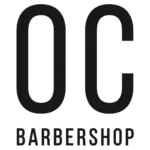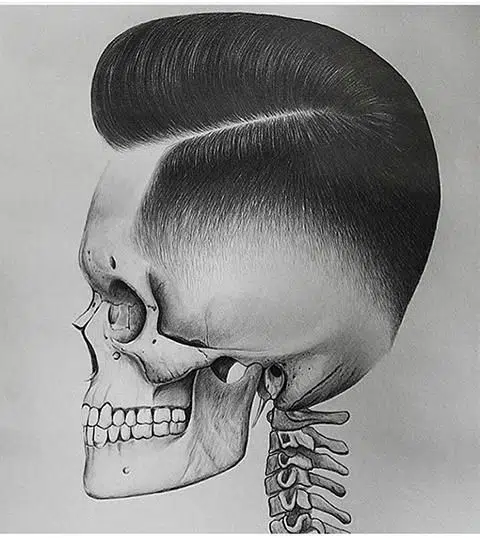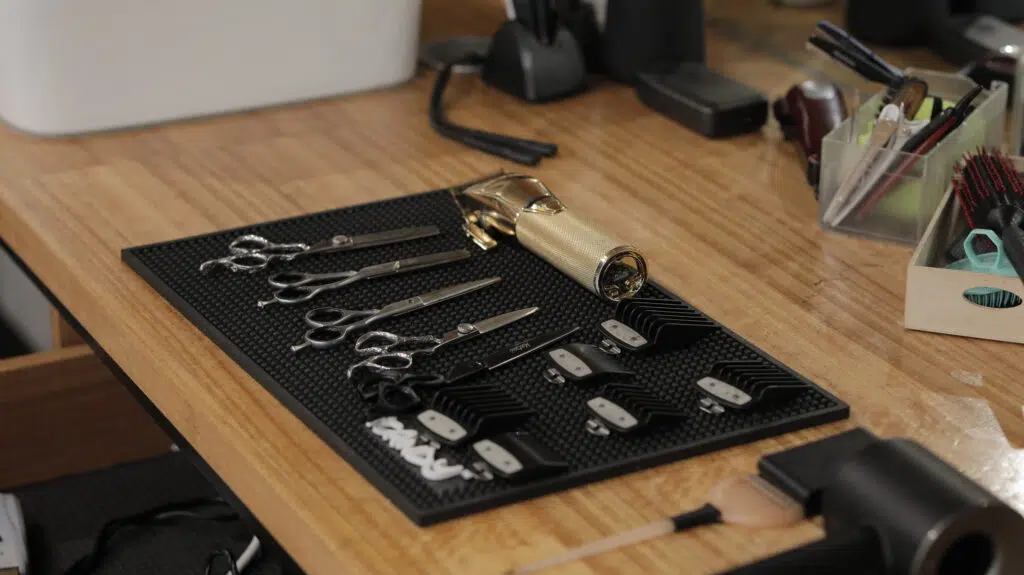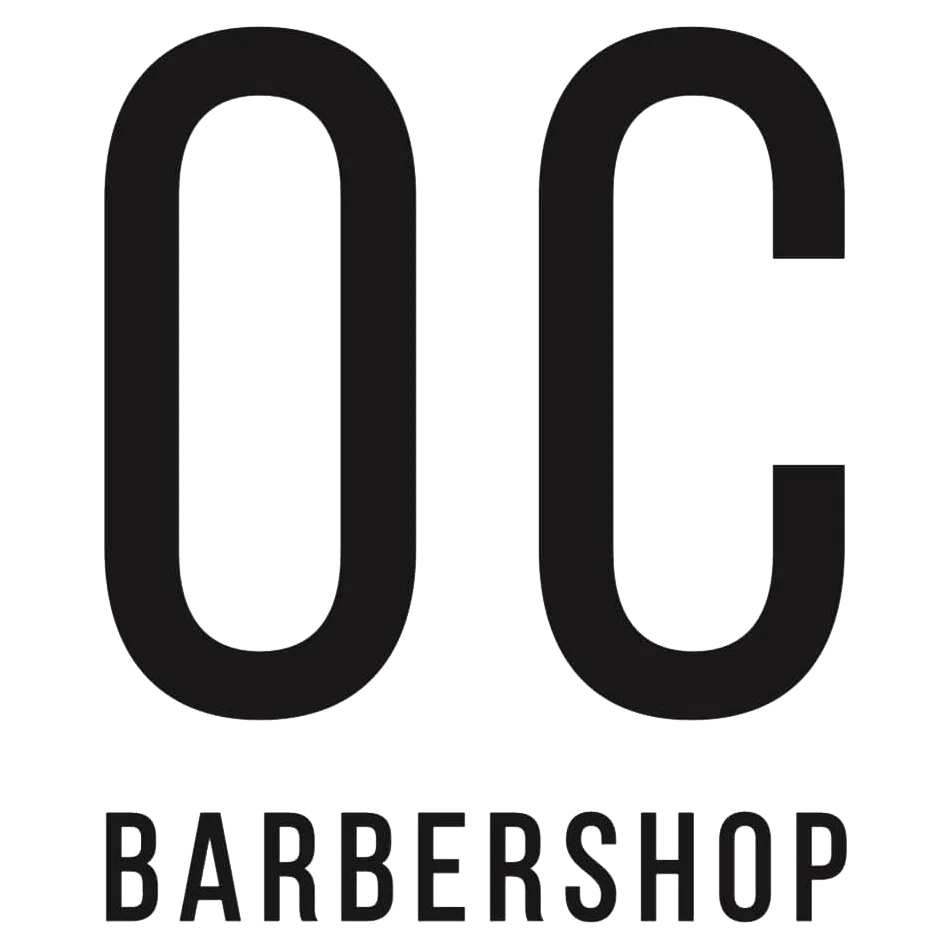

Barbershop Hygiene: Best Practices for Cleanliness

We understand the importance of maintaining a clean and hygienic barbershop environment, not only for the well-being of the clients but also for the success of my business. In this blog, we will discuss some best practices for cleanliness in your barbershop, ensuring that you provide a safe and comfortable experience for your customers.
1. Regular Cleaning and Sanitizing
The foundation of a clean barbershop starts with regular cleaning and sanitizing. It is essential to maintain cleanliness not only for the visible areas but also for the often overlooked spaces. Cleanliness should be your top priority to prevent the spread of germs and infections.
Ensure that all surfaces, tools, and equipment are regularly cleaned and sanitized. This includes barber chairs, countertops, mirrors, sinks, and floors. Use appropriate cleaning solutions and disinfectants to eliminate bacteria and viruses effectively.
Don’t forget about the tools of the trade! Clippers, combs, scissors, and brushes should be cleaned and disinfected after each use. Develop a routine for cleaning and disinfecting your tools to maintain their longevity and prevent any cross-contamination.
2. Hand Hygiene
Clean hands are a must in any barbershop setting. Barbers must wash their hands thoroughly with soap and water before and after each client. Proper handwashing technique involves wetting hands, applying soap, scrubbing for at least 20 seconds, rinsing thoroughly, and drying hands with a clean towel or air dryer.
Hand sanitizers should also be readily available for both barbers and clients. Place hand sanitizing stations at key locations throughout your barbershop, such as near the entrance, waiting area, and at each barbering station. Encourage everyone to use hand sanitizers frequently to maintain hand hygiene.
3. Barber Attire and Personal Hygiene
Barbers should maintain a professional appearance and practice good personal hygiene. This includes wearing clean and laundered uniforms or clothing, and keeping hair well-groomed and covered with appropriate headgear, such as a cap or hat.
Facial hair should also be well-maintained. Beards and mustaches should be neatly trimmed and well-kempt. This not only adds to the overall professionalism but also helps prevent loose hairs from falling onto clients or getting caught in equipment.
It is equally important for barbers to have fresh breath. Nobody wants to have a conversation with someone with bad breath, especially when they are inches away from their face. Encourage regular dental hygiene and provide options for breath fresheners, such as mints or mouthwashes.
4. Proper Waste Management
Effective waste management is crucial in maintaining cleanliness and preventing the spread of infections. Make sure you have designated waste bins throughout your barbershop for proper disposal of used towels, tissues, and other disposable items.
Sharps, such as used blades, should be disposed of safely in puncture-resistant containers. These containers should be securely sealed and labeled for proper disposal to protect both barbers and waste handlers from accidental injuries.
5. Clean and Fresh Air
A well-ventilated barbershop not only prevents odors but also helps to reduce the concentration of airborne contaminants. Ensure proper ventilation by opening windows whenever possible or installing an effective HVAC system.
Regularly replace air filters to maintain good air quality in your barbershop. Proper airflow will help prevent the buildup of dust, hair, and other particles, creating a more comfortable and hygienic environment for both barbers and clients.
Conclusion
Maintaining cleanliness and hygiene in your barbershop is essential for the health and safety of your clients and the success of your business. By following these best practices, you can create a clean and inviting environment that your customers will appreciate.
Remember, at Barbersets.com, we not only offer a wide range of high-quality barber supplies but also strive to provide valuable information to help you succeed in your professional barbering journey. Stay tuned for more helpful tips and tricks to elevate your barbershop experience!
6. Education and Training
Keeping your barbers and staff well-educated and trained on proper hygiene practices is crucial for maintaining cleanliness in your barbershop. Make sure they are aware of the importance of cleanliness and the potential risks of poor hygiene.
Provide regular training sessions on proper cleaning and sanitizing techniques, including how to effectively clean and disinfect tools, surfaces, and equipment. Educate them on the importance of hand hygiene and demonstrate the correct handwashing technique.
It’s also essential to stay updated on the latest best practices and guidelines for cleanliness in the barbershop industry. Stay informed about any new regulations or recommendations from health authorities or professional organizations in your area.
Encourage your barbers and staff to take online courses or attend workshops and conferences related to hygiene and cleanliness in the barbershop environment. This ongoing education will keep them informed about new techniques and products that can enhance cleanliness in your barbershop.
7. Clear Communication with Clients
Effective communication with your clients is vital to ensure they are aware of the cleanliness practices in your barbershop. Display clear and visible signage throughout the shop that highlights your commitment to cleanliness.
Inform your clients about the steps you take to maintain cleanliness, such as regular cleaning and disinfecting of surfaces and tools, proper waste management, and hand hygiene practices. This transparency will help build trust and reassure your clients that their well-being is a top priority.
Encourage your clients to ask any questions or voice their concerns regarding cleanliness. Create an open dialogue where they feel comfortable discussing any hygiene-related issues. This will not only help address their concerns but also provide valuable feedback for improving cleanliness in your barbershop.
8. Regular Inspections and Audits
Regular inspections and audits are essential to ensure compliance with cleanliness standards in your barbershop. Designate a staff member or hire a professional auditor to conduct routine inspections to identify any areas that may need improvement.
During these inspections, assess the cleanliness of surfaces, tools, equipment, and the overall environment. Check for any signs of inadequate cleaning, such as dirt, dust, or residue. Pay attention to commonly overlooked areas, such as corners, crevices, and storage spaces.
Address any issues identified during the inspections promptly. Take corrective actions immediately to rectify any cleanliness deficiencies and prevent potential health risks.
9. Collaboration with Local Health Authorities
Collaborating with local health authorities can provide valuable insights and guidance on hygiene practices for barbershops. Reach out to your local health department or regulatory agencies to seek their advice and recommendations on maintaining cleanliness in your barbershop.
They can provide you with specific guidelines and regulations for barbershops in your area, including requirements for cleaning, sanitizing, waste management, and ventilation. Complying with these guidelines will help ensure that your barbershop meets the necessary cleanliness standards set by the authorities.
In some cases, health inspectors may conduct inspections of barbershops to ensure compliance with hygiene standards. Building a positive relationship with health authorities can help streamline these inspections and demonstrate your commitment to maintaining cleanliness in your barbershop.
10. Quality Barber Supplies
Last but not least, using high-quality barber supplies can greatly contribute to maintaining cleanliness in your barbershop. Invest in professional-grade tools, equipment, and cleaning products that are designed for barbershop use.
Poor-quality tools can be more challenging to clean and disinfect effectively, leading to potential cross-contamination. High-quality tools are typically easier to clean and maintain, reducing the risk of bacterial or viral contamination.
Similarly, using reliable cleaning and disinfecting products will ensure that surfaces and tools are properly sanitized. Look for products that are specifically formulated to eliminate germs commonly found in barbershops, such as those with antibacterial or antiviral properties.
